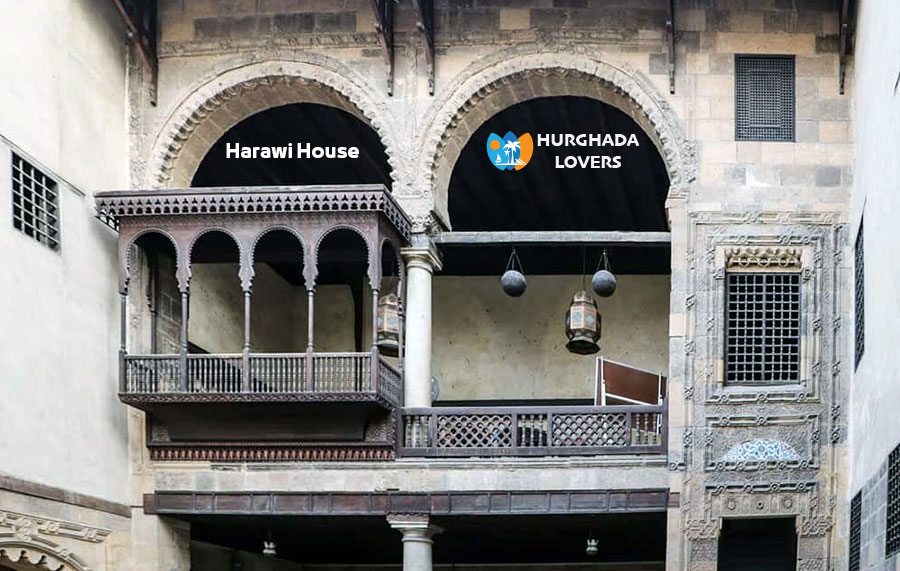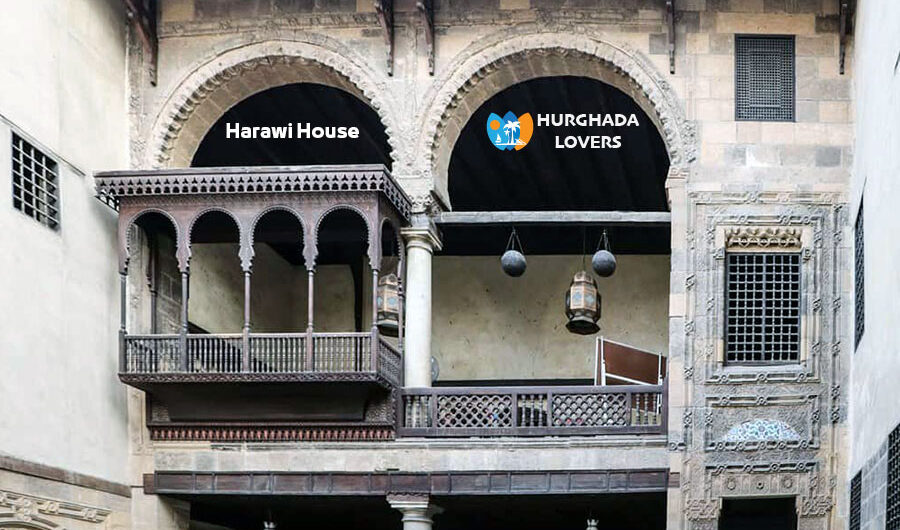Harawi House in Cairo, Egypt
Islamic Egypt History and facts about the construction of the Arab Oud House, the most important Islamic archaeological sites in Egypt, ancient Islamic monuments, visiting hours, entry ticket prices, and more about Islamic Egyptian Antiquities.
Harawi House Facts
Al-Harawi Historical House This very large and very distinctive house, whether in terms of its colour, which is considered unconventional.
It is a place with a yellow color, but it is a little dark, which gives a very elegant appearance in the end..
The architectural design that was used in it represents, until now, a very large and distinctive architectural masterpiece, the likes of which have never been seen before, expressing the presence in Egypt of a great historical era, in which that great Egyptian engineer was at that time a creative artist..
Where Al-Harawi’s house was built, it is as if an artistic painting will grow in its place, and it is expected that it will remain authentic for many years..
But what is very striking in a surprising way in that house is that all the Mashrabiya Architecture art observed in it is completely different from many of the most important of those ancient or Egyptian Islamic houses that were built in that style. As a large number of them actually bear a group of supplications and Quranic verses.“
Where is the Harawi house located?
The great Al-Harawi House is located within a very important and unique group of Islamic houses in the area of Al-Azhar Mosque.
At that time, it was next to the Wasila House, and it is distinguished by the fact that it also overlooks the house of Zeinab Khatoun house, located on Muhammad Abdo Street in the Al-Azhar area..
It was established in the past by the leader Ahmed bin Youssef Al-Sayrafi in approximately 1731 AD..
This house was later attributed to the great old physician, Abdul Rahman Pasha Al-Harawi, as he was the last person to have personal ownership of this house, which was in 1881 AD..
House Description
In fact, the Harawi House specifically includes two large facades, one of which is the main one, located on the southern or western side..
But the other one is on the northern or eastern side, and as for the other two facades of the manor, one of them is a facade completely adjacent to the house of Mrs. Wasila, and the other facade is a facade closely adjacent to a number of modern buildings..
But the main entrance to that archaeological or southwestern facade of that large house has another important entrance located on that side or facade in the northeast..
This large house consists of two floors, the first floor of which includes the large corridor and all its accessories..
These are represented by both the mill and the stable, as well as the grain harvest and the house’s stairs on the sea side, the house courtyard institute, then the summer seat hall, up to the selamlik, and both the harem stairs and all its accessories, along with the basement room..
Peace be upon you in that ancient house
Also, the “selamlik” in that house was allocated for the success of receiving guests or all the house owner’s belongings, for men..
It consists of two iwans, but in the middle of them is what is called the cloister, in which there is a fountain, one of which is decorated with pieces of mosaic..
But the floor in Al-Harawi’s house is made of marble, with loud, elegant colors that are at the same time calm..
This large fountain had a clear but hidden purpose at the time, as it could prevent espionage operations..
It was through that sound of that rising water that it made, but it was considered an unconventional way at that time to make noise from knowing what the people in the house were saying..
This method was common during that period of Islamic rule, in addition to the fact that it had a high and important function, which was the success in cooling the air during the hot summer days..
As for the second floor in Beit Al-Harawi, it includes the presence of the mandara and the staircase that leads to the main hall and with them a large corridor. There is also a prominent building from which we can reach a number of upper floors and at the same time there is a waiting room that has a wooden ceiling that opens to the outside through an exposed opening..
What is the price of a ticket to visit Beit El Harawi for Egyptians?
The ticket fee to visit Beit El Hawary for adults is: 10 Egyptian pounds.
The ticket fee for visiting Al-Hawari House for Egyptian students is: 5 Egyptian pounds.
What is the price of a ticket to visit Beit El Harawi for foreigners?
The ticket fee to visit Beit El Hawary is: 40 Egyptian pounds.
If the visitor is a foreign student, the entrance fee is: 20 Egyptian pounds.
Note: Facts and secrets of the history will be added soon…
Hurghada Excursions Lovers, Best Travel Agency in Hurghada to provide daily tours to visit the Tourist attractions of Luxor by Hurghada to Luxor Tours and Hurghada to Pyramids Trips. Book online when you come to Hurghada, El Gouna, Sahl Hashish, Makadi Bay, Soma Bay.

